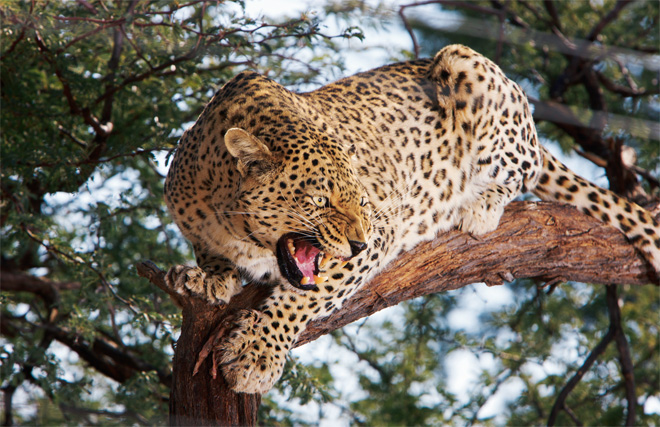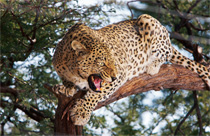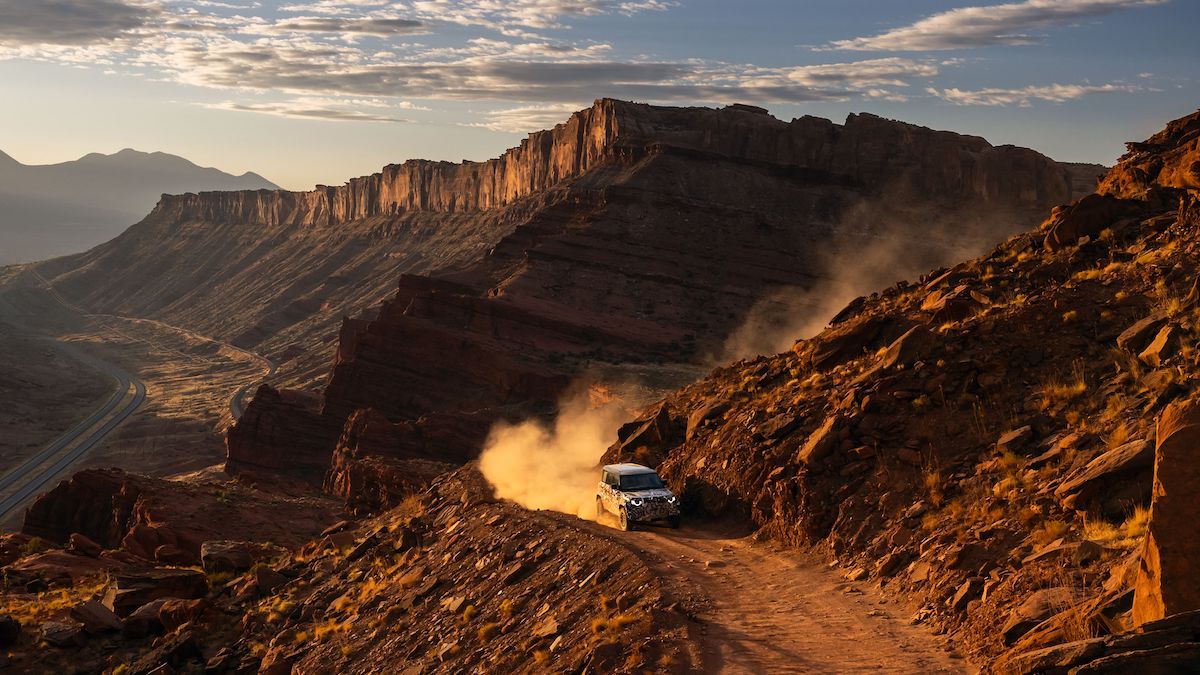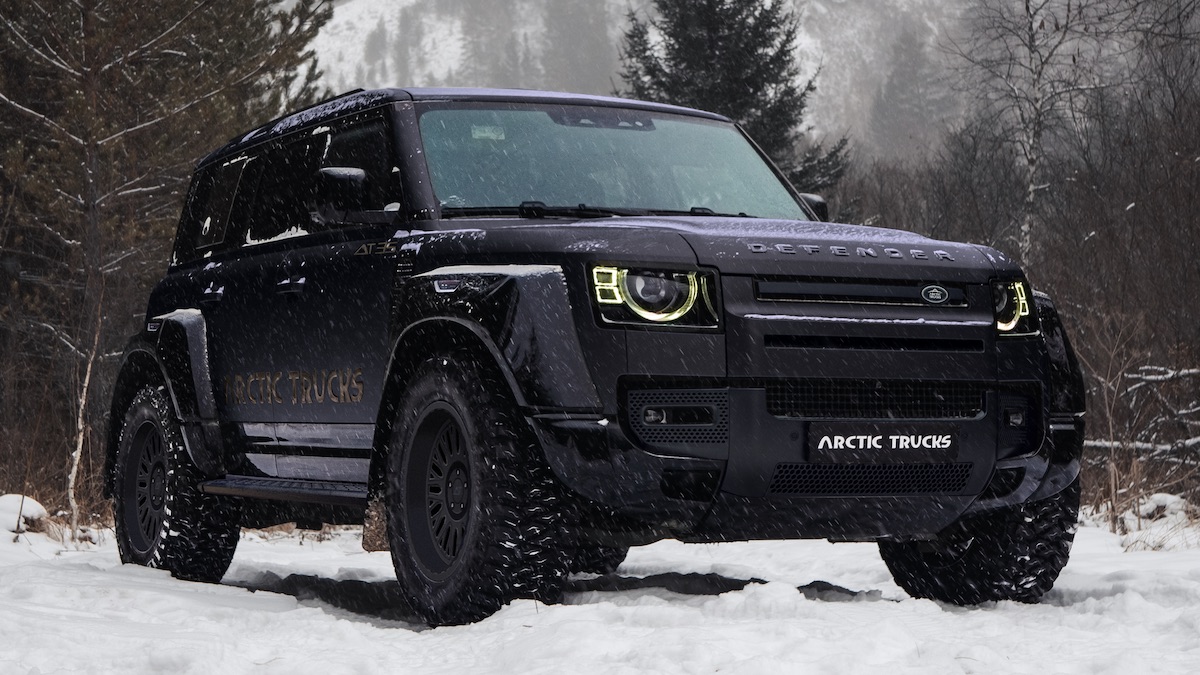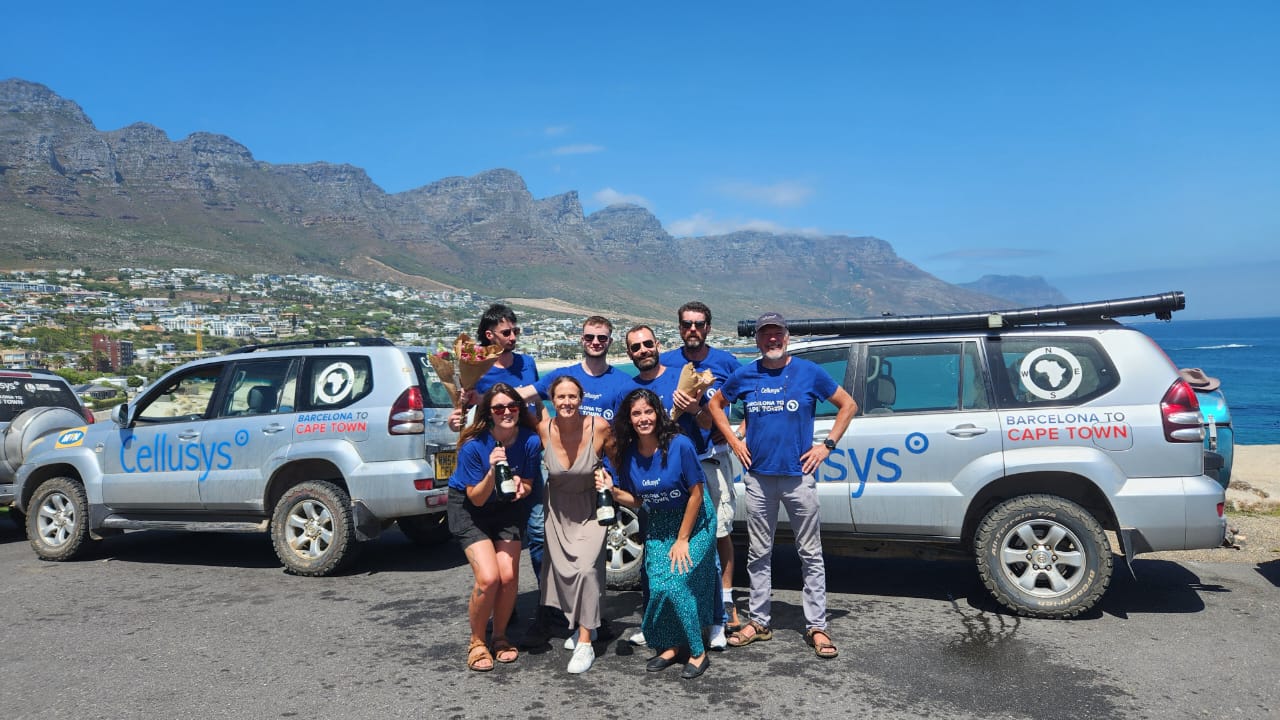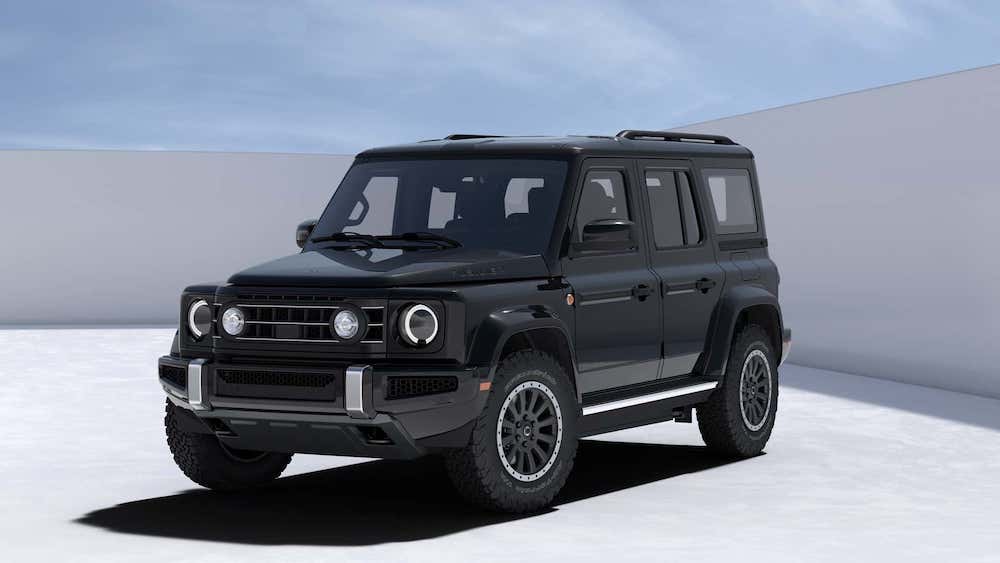When professional wildlife photographer Heinrich van den Berg and his wife Dana, a keen amateur photographer, decided to take a month-long photographic trip, they headed Namibia’s way. This is part one of their 8364km 4×4 adventure, in Heinrich’s own words
There we were, looking. Looking for that one special moment that my Canon digital camera could capture, in one of the most beautiful places on earth: Namibia.
I’ve had plenty of these “special” moments over the years, ever since I started playing around with cameras when I was in high school. It’s what keeps me going.
It wasn’t always like that. After school I spent six years studying to become a qualified civil engineer. That was followed by two years of work in this field. I designed roads and bridges, but my camera kept calling.
In 1998, I bid the civil engineering world farewell, and concentrated on fulfilling my dream: to work as a professional wildlife photographer.
Over the years, I have climbed icy volcanoes in Argentina and Chile, I have tracked endangered gorillas in Rwanda, searched for rare chameleons in Madagascar, wandered through the sacred temples of Cambodia, and walked the steamy forests of Borneo and Sumatra in search of the elusive orang-utan.
But Namibia has always remained a firm favourite. Maybe it’s the desolation, the stark beauty, the wildness. There’s just something special about this place and its people.
Our Mitsubishi Pajero 3.2Di-D GLS, although spacious, battled to swallow all our camera and camping gear. Well, then it did include, but wasn’t limited to, three camera bodies, nine lenses, battery packs, inverter, special lighting, laptop computers, leads… housed in a total of six large containers.
After a few camping items were sacrificed in favour of the camera equipment, we eventually left Johannesburg at around 3pm – much later than anticipated – and made it as far as the town of Zeerust.
We left early the next morning, but at Botswana’s Pioneer Gate border post it seemed as if the officials were doing their best to make the border crossing as time-consuming as possible. We sat there for more than two hours, for no particular reason.
It was just that the officials were having a lot of tea breaks, followed by coffee breaks and, for dessert, some smoke breaks. One solitary soul, who had obviously upset some of his colleagues, and was therefore not being invited to partake in the variety of “breaks”, was issuing the required Botswana road permits.
Finally, we entered Botswana. Namibia’s Buitepos border control followed, and there the crossing was effortless.
We aimed the Pajero towards Harnas Wildlife Foundation, situated about 50km from the settlement of Drimiopsis, north of Gobabis. I’ve been here many times, and Dana and I were looking forward to experiencing the reserve’s wide variety of animals, especially through our camera lenses.
Dana was never really into wildlife photography, being an architectural technologist by trade. But many roads travelled have now moved her in this direction.
The first time we met was on a game farm in KwaZulu-Natal. She is my best friend’s wife’s best friend. We hit it off from the word go, and on that first night, on our way back from dinner, we nearly collided with a large giraffe that had made his bed in the middle of the road. So wildlife has been an intricate part of our existence from the very first day of our relationship.
Dana was off to China to teach English shortly afterwards, but when she came back, we got together again, and got married at the beginning of 2009. She loves travelling, and on a photo shoot in Transkei, where I was supposed to be taking publicity photos, she inadvertently took the cover photograph for our latest publication, South Africa, A Pocket Memento.
Harnas. Now this is an interesti ng story. Angelina Jolie, the famous American actress of Brangelina fame, starred in the movie Beyond Borders, fi lmed in Namibia. The Harnas Wildlife Foundati on’s vultures were used in some of the scenes, and Jolie apparently fell in love with Goeters, a tame cheetah on the farm.
Today she is the international patron of Harnas, and she also funded a fence that now encloses the entire 10 000ha property. This is in aid of a new initiative called the Lifeline Project, where rehabilitated animals set to be reintroduced into the wild are living in an 8000ha fenced area, part of the larger property.
Jolie even has her own house on the farm for when she and husband Brad Pitt , and their small troop of children, visit Namibia.
However, that’s only part of the story. Another aspect of Harnas is the Working Guest programme. International guests with a passion for wildlife get the opportunity to work with the animals, but also have to roll up their sleeves and do other labour on the farm. They pay a lot of money for this privilege.
And I think that’s what bugged me about our three days at Harnas. Sure, the photographic opportunities were great, as they should be at a fee of R5000 per day, but it just seems as if the line between business and wildlife conservation has blurred here a bit. Harnas is more of an animal orphanage than a wildlife conservation institute.
Be that as it may, we had a great ti me taking photographs there. Cheetah, baboons, giraffe, lions, leopard, you name it. And it remains special to sleep in a place where you are woken up by the roar of lions.
Our next stop was Windhoek, and we booked into “The Guest House”, a really nice and classy establishment. The idea was that we would use Windhoek as base, and drive to Na’an ku se Wildlife Sanctuary, about a 30- minute drive north of the capital city.
Na’an ku se, which means, “God is looking over us” in the local San language, seems to be slightly more conservation-orientated than Harnas. Separate camps provide temporary shelter for wild lions, wild leopard, wild meerkat, and so on.
Where a wildlife photographer can spend two weeks criss-crossing the Kruger National Park in search for the elusive leopard and still not finding any, the leopards at Na’an ku se are right there. And they are mostly as wild as wild can be, and won’t enjoy it if you call them over with a friendly “heeeere kitty, kitty!’
The advantage from a photography point of view is that I can capture these animals on my camera’s memory stick as they would behave in the wild. The only difference is that I know exactly where they are.
This 1500ha sanctuary, run by Marlice and Rudie van Vuuren, also boasts a luxury lodge, aimed more at attracting affluent international tourists than professional photographers from South Africa. Yet it is a really wonderful place for wildlife photographers. A volunteer project is also in place here.
While we were stationed in Windhoek, we enquired about the conditions in Swakopmund. A major goal of our monthlong tour of the country was to eat as many oysters as we could manage. And we planned on heading into the Namib Desert too. But the news was bad.
The infamous Oos-wind, the warm wind from the desert, was howling in that area. Everyone we spoke to advised that we steer clear of the coast until the wind had subsided.
So, after two nights in Windhoek, we headed north towards the Etosha National Park. However, just outside the town of Otjiwarongo, I saw a turn-off to “Africat”. I’ve always wanted to stop over there, and since we had time to kill until the Ooswind decided to take a break, we decided to go and have a look.
Africat is yet another big cat conservation project. It is the most “conservationist” we had experienced, with leopards roaming freely on the property. The cats are fitted with GPS collars, so the rangers waste no time in finding especially the camera-shy leopards.
For us though, Africat was all about conservation. Tourists like us just happen to be part of the conservation deal. We liked that a lot.
Sure, the R450 per person for the game drive gave us a bit of a shock, but overall, it was one of the best “save the big cats projects” we have come across. There are currently more than 100 cheetah and leopard in Africat’s custody. There were a lot of special moments for our camera lenses too.
Next stop was Sachsenheim Guest Farm, situated 25km from Etosha’s eastern gate, after a stopover in Tsumeb to stock up on our supplies. We used this quaint guest farm as a base from which to explore Etosha. Not only was it much more affordable than the international tourist-oriented Etosha rates, but the park itself was also filled to the brim with premium-rate-paying tourists.
Etosha. What a wonderful place this is. Even after visiting it many times, I cannot tire of the stark beauty of it and the wild animals that seem to be more real and wild than any other place on earth.
An American trader, one McKierman who visited the area in 1876, perhaps summed it up best when he wrote: “All the menageries (collection of wild animals – Ed) in the world turned loose would not compare to the sight that I saw today”.
For the next four nights we called Sachsenheim our home. Every morning we got up with the sparrows and headed into the park, to one of two watering holes we had identified as possible great photographic sites. In my profession, as experience has proved over many years, it pays more photographic dividends to identify a site such as a favourite watering hole, and wait it out. Driving around for hours can offer a lucky break every now and again, but we’ve found that staying put works better for our purpose.
Interestingly, though, the water levels in the Etosha pans were apparently the highest in 30 years, and there was a lot of game around. We saw countless giraffe and zebra, which were the most frequent visitors to the watering holes. Other spottings included the black-faced impala, wildebeest, impala, eland and jackal.
Indeed, we managed to capture many special moments in Etosha.
Moments that tell their own story.
A story of African wildlife.
A story of stark reality.
“I’m not a great believer in the power of the moving image. A still image has greater lasting power. A still photographer has to show the whole movie in one picture. On the screen, it’s over and back in the can in seconds. A still picture is going to be there forever.” – Eddie Adams, Pulitzer prize-winning American photojournalist who covered 13 wars.
Next month: Heinrich and Dana van den Berg join a 4×4 tour group in the remote Kaokoveld in the Mitsubishi Pajero 3.2Di-D GLS. After visiting the Epupa waterfall, they tackle the notorious Van Zyl’s Pass. And one of the vehicles in their convoy takes a tumble.
Travel guide
* Kingfisher Guesthouse, Zeerust: It features two single bedrooms (with bathrooms), two double bedrooms (with bathrooms), and two double bedrooms with single beds and bathrooms (for families). It also boasts a swimming pool, and all meals can be provided on request. R300 for two people sharing.
Good: It’s situated 55km from the Botswana border
Bad: Very basic, and rather tatty
Contact: 018 642-1417; [email protected]
* Harnas Wildlife Foundation, Drimiopsis: The 10 000ha animal rehabilitation centre boasts accommodation options in the form of chalets and camping sites. A restaurant offers good meals too, if you don’t feel like preparing food yourself. The camping site costs R107 per person per night, and chalet prices start at R303 per person sharing.
Good: Waking up in the middle of the night, with a lion roaring not very far away.
Bad: It was a bit cold for camping.
Contact: +264 62 568828; [email protected]; www.harnas.de
* The Guesthouse, Windhoek: This self-catering establishment is conveniently situated in Stein Street, near the United Nations building and most amenities. The rooms are spacious and comfortable. We paid R290 per person per night (sharing), which included breakfast.
Good: Very convenient, and reasonably priced too.
Bad: No DStv, so we couldn’t watch that Morne Steyn kick in the second test between the Springboks and the British Lions.
Contact: +264 61 225550; [email protected]
* Na’an ku se Wildlife Sanctuary, near Windhoek: Set on the slopes of a dolomite hill, this establishment offers six luxurious en-suite chalets, decorated in soft, earthy tones. Aimed at international dollars, instead of rands, the luxurious lodge also has a restaurant, where the chefs prepare delectable delights. Also on offer here, besides the animals, is a carnivore feeding tour (R250 per person), as well as eco self-drive tours. A 4×4 off-road course and abseiling activities are also on the cards for the future.
Good: The animals, the people, and the setting.
Bad: Expensive to stay here, if you deal in South African rands.
Contact: +264 61 307338; [email protected]; www.ecotourism-namibia.com
* Africat Foundation, Otjiwarongo: This establishment offers both camping and chalets accommodations, and has an on-site restaurant. Good news is that South African citizens qualify for a discount price.
Activities include lots of photographic opportunities, as well as a “game drive” where the staff track the carnivores, which are fitted with GPS collars. We paid R500 per person for a basic room, but this included dinner, bed and breakfast.
Good: This establishment’s main focus seems to be conservation, and it is not as commercially oriented as some of the other “foundations”.
Bad: The R450 per person for the game drive was unexpected. But those GPS collars are expensive.
Contact: +264 67 304566; [email protected]; www.africat.org
* Sachsenheim Guest Farm, Tsumeb: With its traditional farm-style ambience, the guest farm is situated 80km north of Tsumeb, and 25km from Etosha’s Namutoni Gate. It offers comfortable luxury units (double or single), a family unit, as well as fully equipped camping sites. Also part of the deal is a restaurant, and swimming pool. Prices start at R350 per person for the luxury units, to a very reasonable R70 per person per night for camping.
Good: Comfortable and neat, and a lot more affordable than Etosha
Bad: They don’t sell ice.
Contact: +264 67 230011; [email protected]; www.namibweb.com/sachsenheim
General information:
* Etosha National Park: The Namutoni gate, like the park’s other gates, opens at sunrise, and closes at sunset. It cost R130 for our daily passes (vehicle included, and with a South African resident discount). There is a lovely picnic site at Namutoni, as well as a shop at the camp itself. But don’t expect a Pick ‘n Pay hypermarket. Only basic items are on offer, but this does include meat and bread.
The prices for accommodation in Etosha vary greatly. The cheapest lodgings, other than camping, start at R650 per person per night (sharing), which includes breakfast. This goes up to R3500 per person (single) for the Premier Waterhole Chalet (double storey, four beds). This price also includes dinner, and the Premier chalet is situated at the Okaukuejo camp (on the western side of the park).
Camping at any of the park’s three camps will set you back R200 per site (maximum of eight people), and an additional R100 per person. So it would have cost the two of us R400 per night to camp in Etosha itself.
